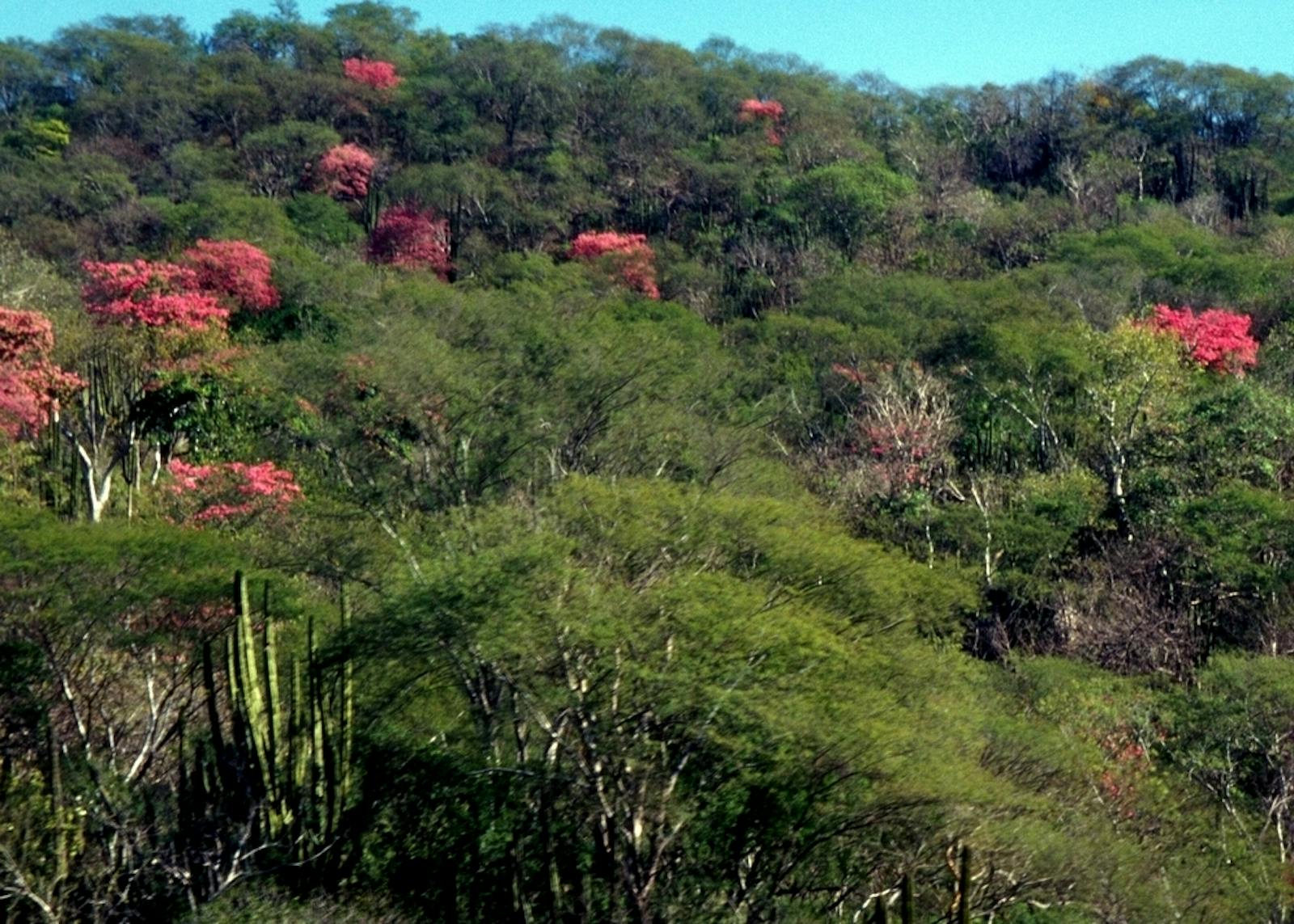Sinaloan Dry Forests
The ecoregion’s land area is provided in units of 1,000 hectares. The protection goal is the Global Safety Net (GSN1) area for the given ecoregion. The protection level indicates the percentage of the GSN goal that is currently protected on a scale of 0-10.
Bioregion: Mexican Dry & Coniferous Forests (NT28)
Realm: Central America
Ecoregion Size (1000 ha):
7,771
Ecoregion ID:
545
Conservation Target:
23%
Protection Level:
4
States: Mexico
Smith's pygmy robber frog is an endangered species of northern rainfrog. It is endemic to Mexico, where it is found primarily within lowland dry forest habitats. The Sinaloan Dry Forests ecoregion is one of the few localities that supports this rare species. It is both small and cryptic, allowing it to blend in easily with leaf litter and ground substrate. These robber frogs breed by direct development, meaning that they lack the tadpole stage and hatch as small in-tact frogs. They are called rain frogs because they are most active when it rains, flooding the dry forests with their loud calls.
.jpeg)
The flagship species of the Sinaloan Dry Forests ecoregion is the Smith's pygmy robber frog. Image credit: Alonso Rodriguez Ramírez, Creative Commons
The Sinaloan Dry Forests ecoregion is situated in the northwestern Pacific coastal plain of Mexico. It constitutes a vast portion of flatlands that extends from the base of the Sierra Madre Occidental slopes to the Pacific coast, in the Mexican states of Sinaloa and Nayarit, and a small portion of south Sonora. The soils are derived from sedimentary rocks, except on the lowest elevations of the Sierra Madre Occidental Mountains, where the soils are derived from volcanic rocks. The climate is subtropical subhumid with a long dry season.
Dominant species in the Sonora section include kapok tree and fern of the desert. In central Sinaloa, characteristic vegetation includes Mexican logwood, kapok, mauto, and Conzattia sericea. The herbaceous stratum is poorly developed, and epiphytes (plants growing on other plants) are rather scarce.
The Sinaloan Forests constitute the northernmost dry forests of Mexico. The region has been isolated from other warm environments, although it shares some species with the Sonoran Desert, especially in the ecotonal areas where these regions meet. This contributes to the overall high biodiversity of the area. It is considered an Endemic Bird Area of the world for the high presence of birds in its dry forests. These forests being the northernmost distribution contributes to the high levels of endemism and speciation due to its general isolation. Wide-ranging cats found in the region include jaguarundi, ocelot, and jaguar.
The dry forests of Sinaloa have been severely disturbed in recent decades, and little of the original vegetation that has covered the northwestern Pacific remains intact. For much of its history the only protected area in the region was established for pine-oak forests that belong to the Sierra Madre Occidental, and only incidentally the dry forests associated to the lower portions of the sierra. In this region, and including a larger area, a vast patch of intact dry forest known as short tree forest survives. A proposal has been written and put into consideration to designate this forest as a protected area in its own right.

Ocelot. Image credit: Creative Commons
The main threats to this ecoregion are agricultural expansion and cattle farming and grazing. Fruit, coffee, and legume plantations have substituted vast portions that were once occupied by dry forests. Many of the trees are used as timber for local fencing and housing. Furthermore, exploitation of native plants for medicinal uses has reduced the populations of Hippocratea excelsa. The current system of protection is inefficient in preserving the dry forests. The predatory cat species found in the region are under hunting pressures—often their pelts are traded—as well as habitat loss pressures.
The priority conservation actions for the next decade will be to: 1) increase the capacity and number of protected areas; 2) educate and promote awareness of sustainable resource extraction; and 3) integrate native vegetation into farming practices (shade-grown coffee).
Citations
1. Valero, A. Schipper, J. Allnutt, T. 2019. Sinaloan dry forests https://www.worldwildlife.org/ecoregions/nt0228 Accessed June 26, 2019.
2. Rzedowski, J. 1978. Vegetación de Mexico. Editorial Limusa. Mexico, D.F., Mexico.
3. Challenger, A. 1998. Utilización y conservación de los ecosistemas terrestres de México. Pasado, presente y futuro. Conabio, IBUNAM y Agrupación Sierra Madre, México.



